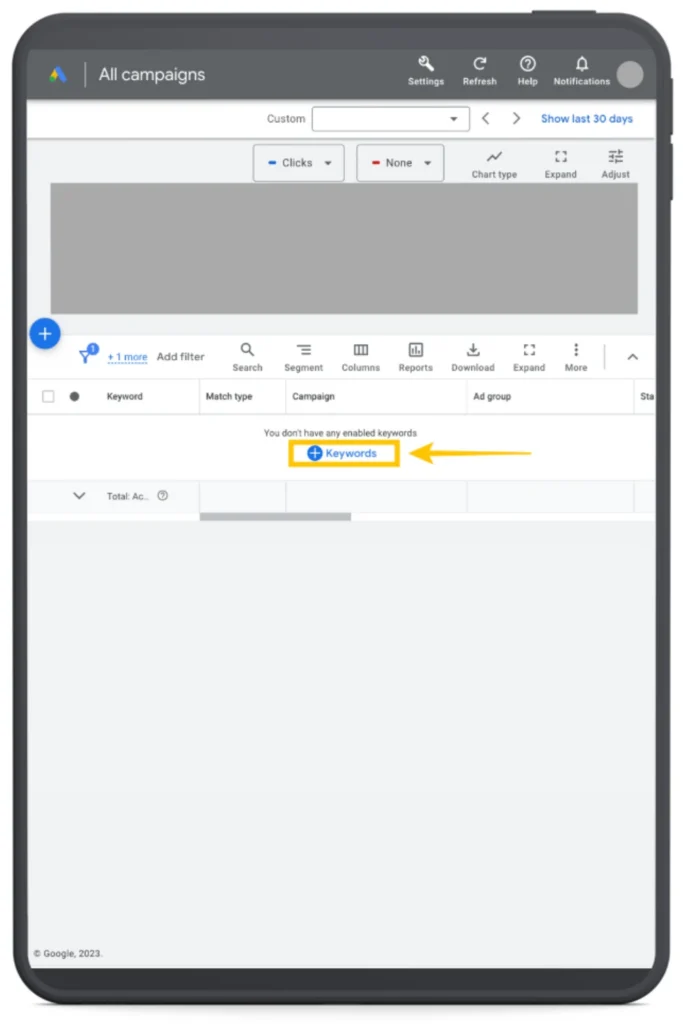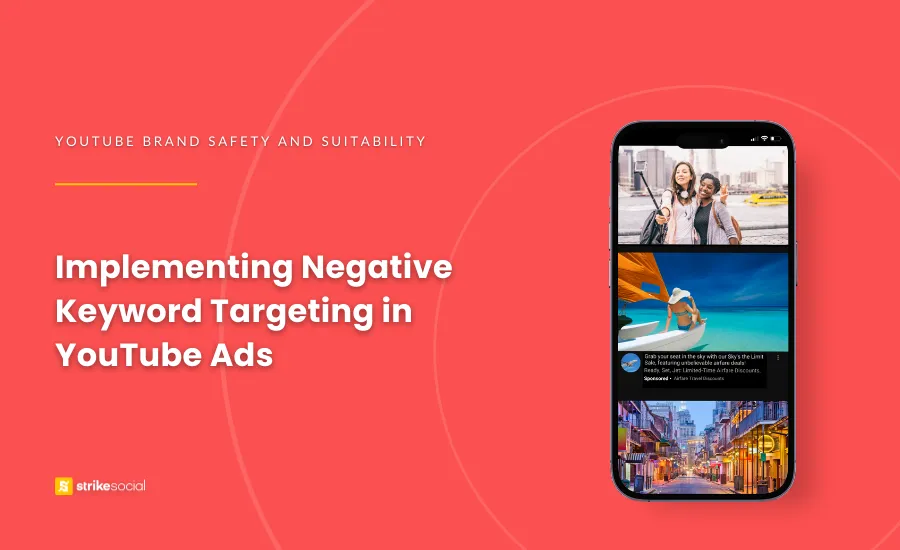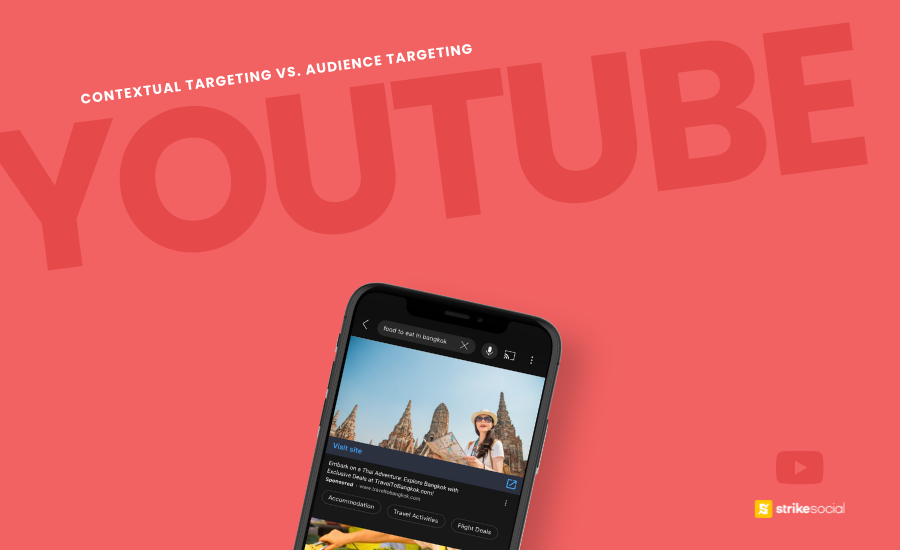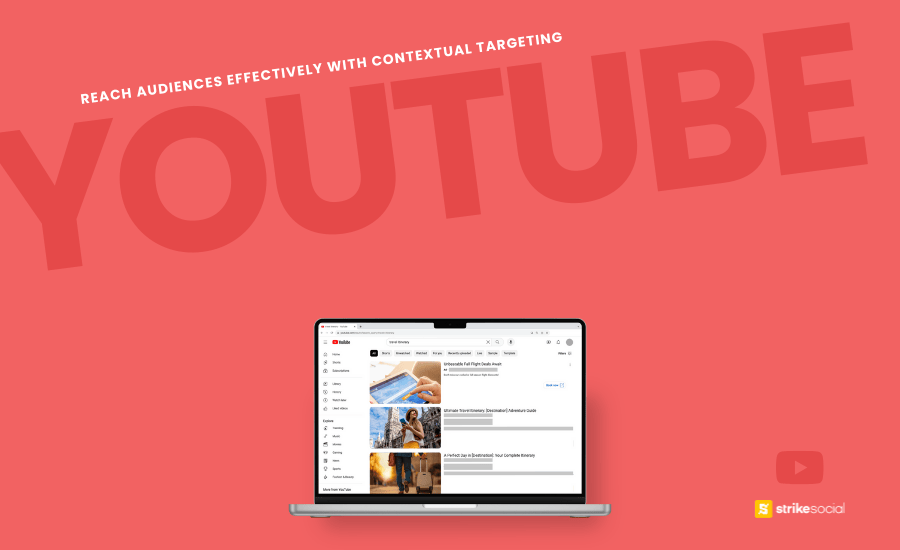Strike Overview
- Finding privacy-friendly targeting solutions has become more challenging, but YouTube contextual targeting offers a promising alternative.
- Google has decided to delay getting rid of third-party cookies until 2024. The death of 3P cookies has caused many concerns for marketers who are figuring out how to adjust to the ‘cookie apocalypse.’
- Unlike traditional methods reliant on cookies or personal data, contextual targeting offers a privacy-conscious approach. This is a compelling choice for digital marketers seeking effective and privacy-respecting targeting solutions.
Jump to Section
This post was updated in September 2025 to provide you with the latest information.
Unveiling the Potential of YouTube Contextual Targeting in Digital Advertising
Google announced last year that it would stop supporting third-party cookies in Chrome, causing concern among digital marketers. For many, this raised concerns about the future of audience targeting. However, fear not; the solution comes from YouTube’s contextual targeting.
Instead of relying on user behavior, this innovative approach employs predictive analysis to anticipate what your target audience may be searching for. The result? A more profound connection with customers who possess unique interests and specific needs—the very essence of what marketers aspire to achieve.
What is Contextual Targeting on YouTube Advertising
Contextual targeting strategically positions ads within YouTube search results and video content. This approach utilizes your selected keywords or topics, aligning your ads with content that shares relevance.
YouTube contextual targeting ensures ads align with the content viewers engage with, creating a unique and relevant ad experience. It uses sophisticated machine learning algorithms developed by Google to discern the context of each video, calibrating it with relevant advertisements.

Source: Google – Ads & Commerce Blog; How advanced contextual targeting works
How Does Contextual Targeting on YouTube Work?
So, how does contextual targeting operate within the YouTube ecosystem? Let’s take a closer look at how it works:
1. Selection of Keywords and Topics
- Advertisers can fine-tune their ad targeting by selecting keywords, topics, and placements. This strategic choice broadens their outreach to potential customers.


- Alternatively, you can target specific topics to display your ad content. This approach allows you to select from a range of broad industries to more specific ones. Explore the list of topics available for your video ad:
2. In-Depth Content Analysis by YouTube
- YouTube’s sophisticated system thoroughly analyzes platform content, identifies video themes, and aligns them with your chosen keywords or topics.
- YouTube contextual targeting takes it a step further. It harnesses the capabilities of machine learning to gain a profound understanding of each YouTube channel. This entails meticulously reviewing the video’s content, title, description, and tags. It ultimately determines whether the channel or video fits your ad’s suitability and relevance.
Further Reading

Applying Negative Keyword Targeting to YouTube Campaigns
Negative keyword targeting allows YouTube advertisers to filter out terms they don’t want their ads associated with. By removing irrelevant keywords, ads are prevented from appearing in unsuitable search results. Lists of negative keywords can be created once and applied to multiple campaigns for consistency.
3. Ad Placement
- The ultimate objective is seamlessly integrating your ads within the most relevant context. This precision optimizes the return on your advertising investment, enhancing the overall effectiveness of your ad campaign.
What Advantages Does Contextual YouTube Targeting Offer for Video Ad Campaigns
Contextual YouTube targeting emerges as a formidable ally for advertisers seeking to achieve precision and relevance in their video ad campaigns. Let’s have a look into this innovative approach’s advantages:
Reach the Right Audience in Real Time
Utilizing YouTube contextual targeting options allows advertisers to reach users based on their real-time content consumption. This approach transcends reliance on historical browsing habits, emphasizing the importance of capturing users’ interests and intent at the present moment.
Advertisers choose topics or use various keywords, offering flexibility to reach their desired niche audience. This precision can be as broad or granular as needed, ensuring the right audience is reached seamlessly.
Further Reading

Contextual Targeting vs Audience Targeting: Choosing the Right Approach
In YouTube advertising, contextual targeting places ads alongside videos that match the subject matter being watched. Audience targeting takes a different route, focusing on the viewer’s profile, interests, and prior behaviors. This comparison explores when each option can be the more effective choice.
Reduced Reliance on Third-Party Cookies
According to Pew Research, 79% of US adults express concerns about collecting their user data online. Furthermore, Deloitte’s research highlights that a mere 47% of US consumers trust online services to safeguard their data. This palpable apprehension reflects the growing unease among internet users regarding handling their personal information.
In essence, contextual advertising empowers marketers to connect with the right people without intruding on their privacy. This approach relies on contextual relevance, aligning content and ads with user interests and intent while respecting privacy rights.
Enhanced User Experience
Contextual ad placement boosts returns by aligning ads with user-engaged content, ensuring better engagement and user experience. This not only encourages better engagement but also complements users’ viewing experiences.
Contextually relevant ads play a pivotal role in reducing ad fatigue among visitors. When ads seamlessly integrate with the content users are interested in, they are less likely to find them disruptive.
Boosting Purchasing Intent
Research underscores the significant influence of emotional responses to ads on consumers’ propensity to purchase. Contextual advertising excels in catering to these emotional triggers, as evidenced by a 3:1 factor for TV and a 2:1 factor for print.
DoubleVerify (DV), YouTube’s brand suitability partner, further validates the impact of YouTube’s advanced contextual targeting. DV’s research reveals that 69% of consumers are likelier to engage with ads that align with their viewing content. Contextual advertising, bolstered by machine learning and stringent privacy regulations, coordinates with this consumer-driven agenda.
Let’s Talk
Find out how our YouTube ad management solutions deliver a 10–20% lift in campaign efficiency.
Assures Brand Safety
Contextual targeting takes a unique approach to ensure brand safety on YouTube. Instead of solely relying on user data, it considers the broader context in which ads are displayed. This encompasses various factors such as webpage content, location, and weather conditions.
By factoring these elements in, this YouTube targeting strategy reduces the risk of ads being placed alongside inappropriate, irrelevant, and non-suitable content.
Are YouTube Ads Effectively Targeted with Contextual Targeting?
Amid future cookie restrictions, YouTube contextual targeting becomes a strong, dependable approach for advertisers, navigating privacy regulations and user expectations. Contextual targeting on YouTube assures advertisers they can confidently navigate a future devoid of traditional cookies. It represents a privacy-conscious and effective solution coordinated with the platform’s privacy regulations and evolving user expectations.
However, it’s important to note that YouTube contextual targeting does not supplant traditional targeting methods; it enhances them. Advertisers should adopt a holistic approach by combining contextual and audience targeting, instead of completely discarding traditional strategies. Though these methods differ, their synergy forms a potent advertising strategy, reaching the right audience at the perfect moment.
Article by
Lee Baler, Strike Social’s VP of Sales & Strategy
Lee leads global strategy, helping clients and agencies maximize YouTube and paid social performance. Constantly tracking industry trends, he translates insights into strategies that help brands stay competitive and achieve sustained profitability.








